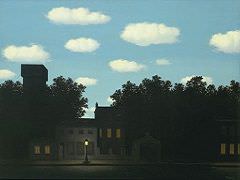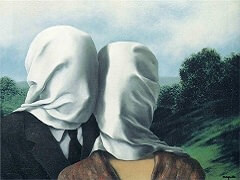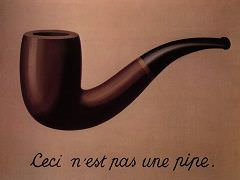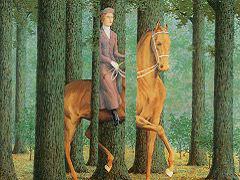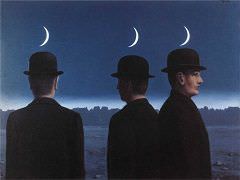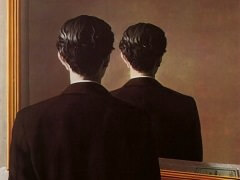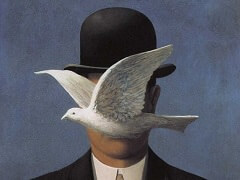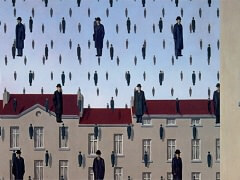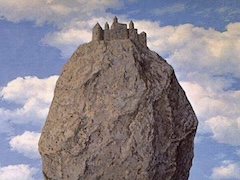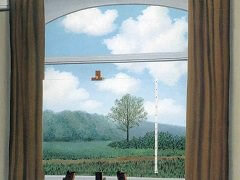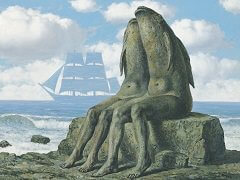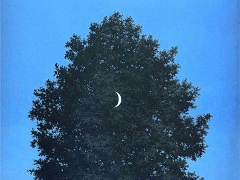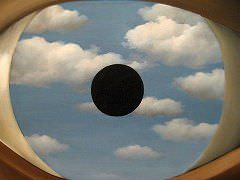The Great War, 1964 by Rene Magritte
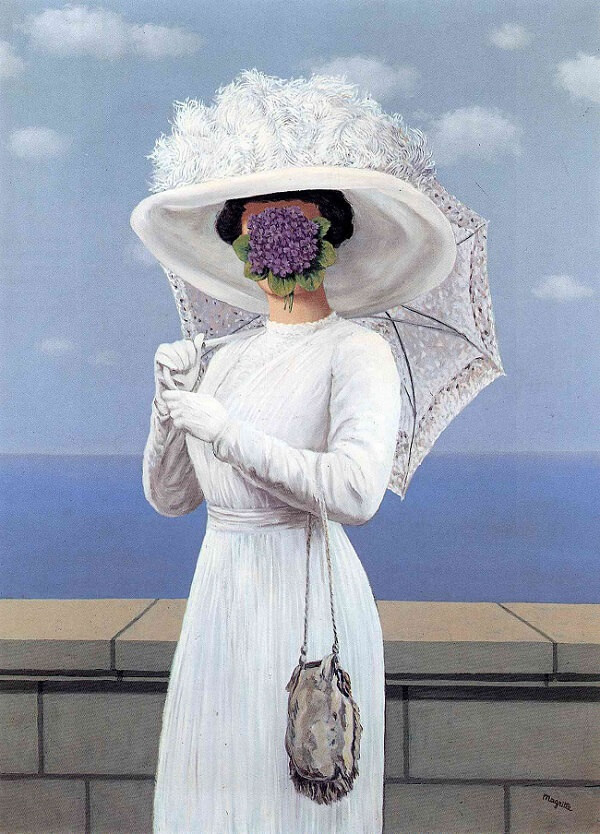
Magritte painted The Great War in 1964 while remembering his experiences with the WWI and WWII, and confronting, like all of us, the nice perspective of WWIII.
War is an unattainable woman. She seduces us with her very inaccessibility. Her face, so we believe, should be as beautiful as her garment. We dream to enjoy seeing it but this pleasure is never available - even the most obvious, the most justifiable wars are ambiguous! Wars are always too costly in terms of lost lives and bodily mayhem.
War-worshipers (war-shipers) glorify her with pompous hats and decorative parasols of war-advertisement (war-dvertisement), but the war's bag carries our stupid animalism we project into her together with our loyal dedication. What covers the face of war? - The dirt thrown at it by the truth about war stating that this dirt is the coffin flowers.
The relation between foreground and background comments about the banishment of life, in the periods of pro-war hysteria, into the forms of nature, which are distant from and indifferent to the human survival (ocean and sky). When the human soul is petrified and civilization is transformed into the protective walls (parapet), the nature is de-naturalized (there is no grass or trees on the land, and no signs of life on the ocean or in the sky). The trio of colors (violet, dark blue and light blue) shows the destiny of melting human flesh decided by war - its way out: into the death.


